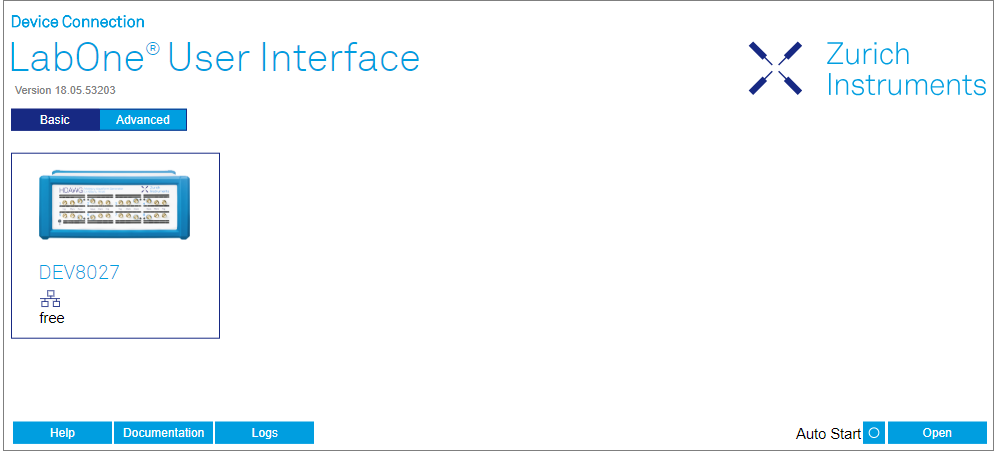Quick Start Guide¶
This page addresses all the people who have been impatiently awaiting their new gem to arrive and want to see it up and running quickly. Please proceed with the following steps:
-
Inspect the package content. Besides the Instrument there should be a country-specific power cable, a USB cable, an Ethernet cable and a hard copy of the user manual Getting Started.
-
Check the Handling and Safety Instructions in Handling and Safety Instructions.
-
Download and install the latest LabOne software from the downloads page. Choose the download file that fits your computer (e.g. Windows with 64-(bit) addressing). For more detailed information see Software Installation.
-
Connect the Instrument to the power line. Turn it on and connect it to a switch in the LAN using the Ethernet cable.
-
Start the LabOne User Interface from the Windows Start Menu. The default web browser will open and display your instrument in a start screen as shown below. Use Chrome, Edge, Firefox, or Opera for best user experience.
-
The LabOne User Interface start-up screen will appear. Click the Open button on the lower right of the page. The default configuration will be loaded and the first signals can be generated. If the user interface does not start up successfully, please refer to Connecting to the Instrument.
If any problems occur whilst setting up the instrument and software
please see the
Troubleshooting
at the end of this chapter. After use it is recommended to shut down the
instrument using the soft power button on the front panel instrument or
by clicking on the  button at the bottom left of the user interface screen before turning
the power switch on the back panel of the instrument.
button at the bottom left of the user interface screen before turning
the power switch on the back panel of the instrument.
Once the Instrument is up and running we recommend going through some of the Tutorials. Moreover, Functional Overview provides a general introduction to the various tools and settings tabs with tables in each section providing a detailed description of every UI element as well. For specific application know-how the blog section of the Zurich Instruments website will serve as a valuable resource that is constantly updated and expanded.
